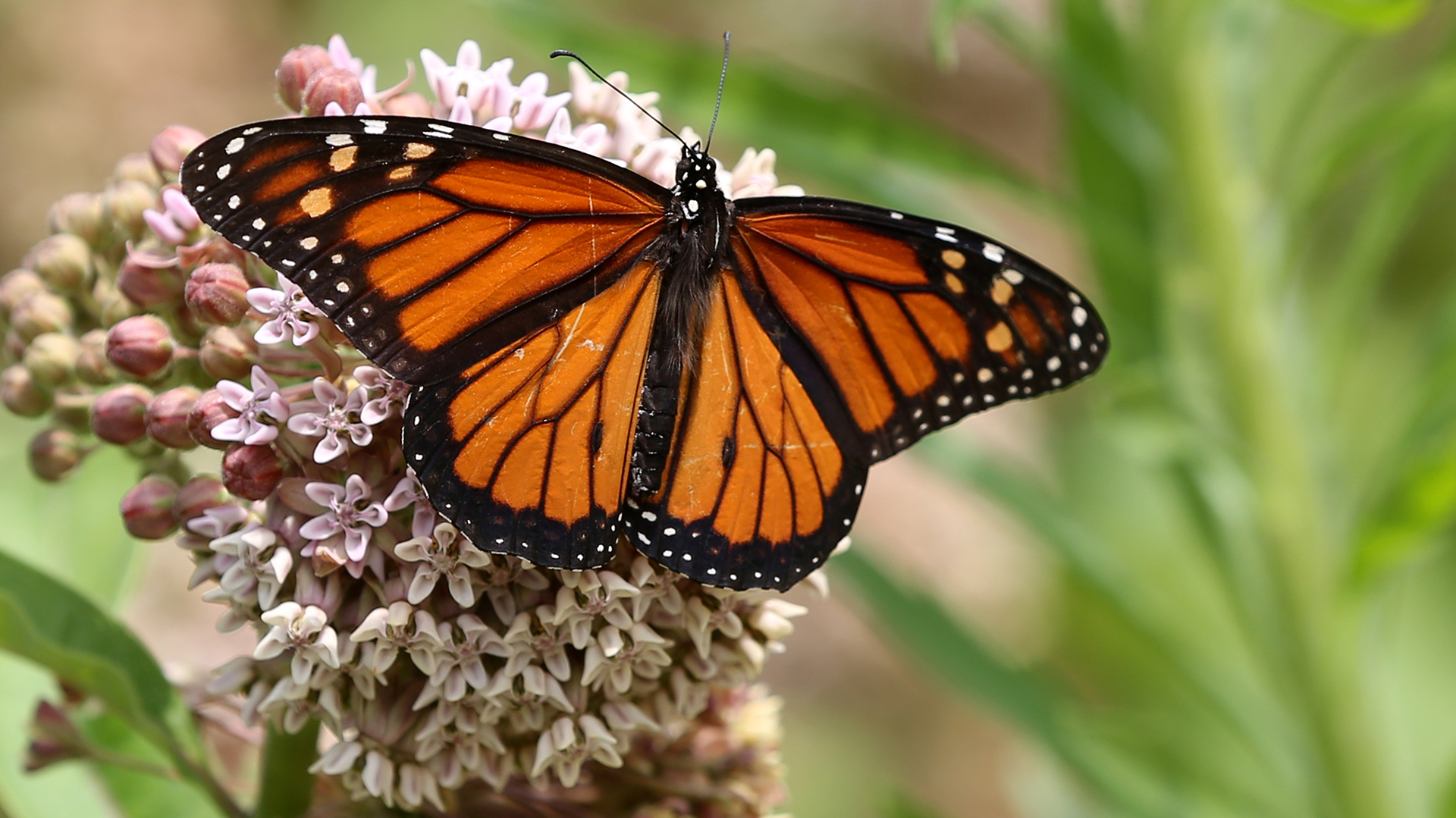Monarch butterflies teetering ‘on the edge of collapse,’ added to endangered species list
Monarch butterflies are now listed as endangered, but 'there are signs of hope.'

The migratory monarch butterfly has joined the endangered species list.
On Thursday (July 21), the International Union for Conservation of Nature (IUCN) listed the butterfly, a subspecies of monarch (Danaus plexippus) as endangered, indicating that the subspecies is facing a high risk of extinction in the wild. The main threats to the migratory monarch are habitat loss, pesticide and herbicide use, and climate change.
"It is difficult to watch monarch butterflies and their extraordinary migration teeter on the edge of collapse, but there are signs of hope," Anna Walker, a member of the IUCN's butterfly and moth specialist group and a species survival officer at the New Mexico BioPark Society, said in a statement. "So many people and organizations have come together to try and protect this butterfly and its habitats."
Related: American bumblebee could be officially declared endangered
The migratory monarch weighs less than a gram but performs one of the most amazing journeys in the animal kingdom. Each year, migratory monarchs travel from wintering grounds in Mexico and California to breeding grounds in Canada and the northern United States. The migration can stretch up to 2,485 miles (4,000 kilometers) and a full cycle takes months. Butterflies hatch in the U.S. and Canada in summer and head south before cold weather hits. The migrating butterflies then head north, breeding along the way. It takes several generations to make this return journey, and it's usually the great-grandchildren of the first generation that arrive back at the northernmost point of the migration.
To survive the journey, monarchs rely on rest stops in specific habitats, such as the oyamel fir (Abies religiosa) forests of Mexico, and coastal stands of eucalyptus, Monterey pines and Monterey cypresses in California. These forests provide winter shelter for the insects, according to the U.S. Forest Service. Monarchs also rely on milkweed (Asclepias sp.), the only plant their caterpillars can feed on.
But these habitats are threatened, the IUCN analysis of migratory monarchs found. Mexican and California forests are endangered by clear-cutting for agriculture and development and by wildfires, which are exacerbated by climate change. Meanwhile, pesticide use kills monarchs directly, while herbicides kill milkweed. Drought also kills milkweed, and earlier monarch migrations triggered by warming temperatures may mean that the monarchs are beginning their journey before milkweed is available, according to the IUCN. The agency estimates that the native population of migratory monarchs has shrunk between 22% and 72% in the past 10 years.
Sign up for the Live Science daily newsletter now
Get the world’s most fascinating discoveries delivered straight to your inbox.
The western population of these butterflies, which leaves west of the Rocky Mountains and overwinters in California, has shrunk by 99.9%, according to the IUCN, from a population of 10 million in the 1980s to only 1,914 today. The eastern population, which lives east of the Rockies and migrates to Mexico for the winter, has shrunk by 84%.
In 2020, the U.S. Fish and Wildlife Service found that adding the monarch to the U.S. endangered species list was "warranted but precluded," meaning that the butterfly met criteria for listing under the Endangered Species Act, but that the FWS did not at the time have enough resources to prioritize the listing due to other, more pressing listing needs.
"From planting native milkweed and reducing pesticide use to supporting the protection of overwintering sites and contributing to community science, we all have a role to play in making sure this iconic insect makes a full recovery," Walker said.
The nonprofit organization Monarch Joint Venture has tips on how to join the fight to save migratory monarchs if you live in a region that the butterflies visit. Among the ways to get involved:
- Plant milkweed. Different species are adapted to different regions, so use this factsheet (PDF) from Monarch Joint Venture to see what will grow best in your area.
- Plant a monarch buffet. Adults monarchs eat from a variety of plants. Regional guides can be found at the Xerces Society.
- Never use insecticides around pollinator habitat, and limit the use of herbicides.
- Advocate for pollinator-friendly policies both locally and nationally.
- Participate in a community science project by tracking monarchs in your area.
Originally published on Live Science.

Stephanie Pappas is a contributing writer for Live Science, covering topics ranging from geoscience to archaeology to the human brain and behavior. She was previously a senior writer for Live Science but is now a freelancer based in Denver, Colorado, and regularly contributes to Scientific American and The Monitor, the monthly magazine of the American Psychological Association. Stephanie received a bachelor's degree in psychology from the University of South Carolina and a graduate certificate in science communication from the University of California, Santa Cruz.









